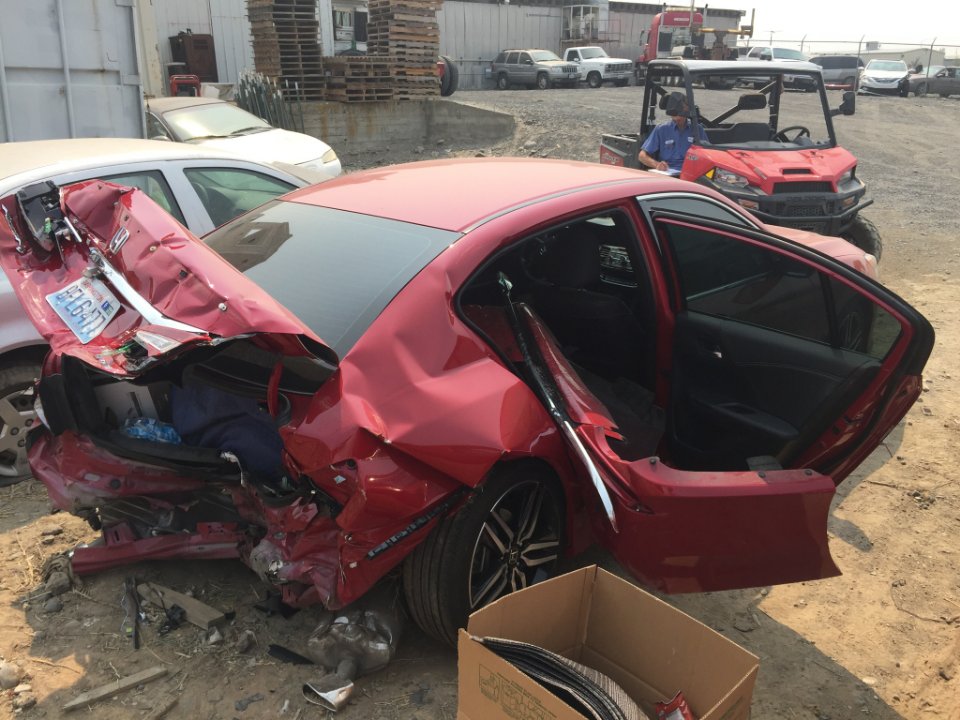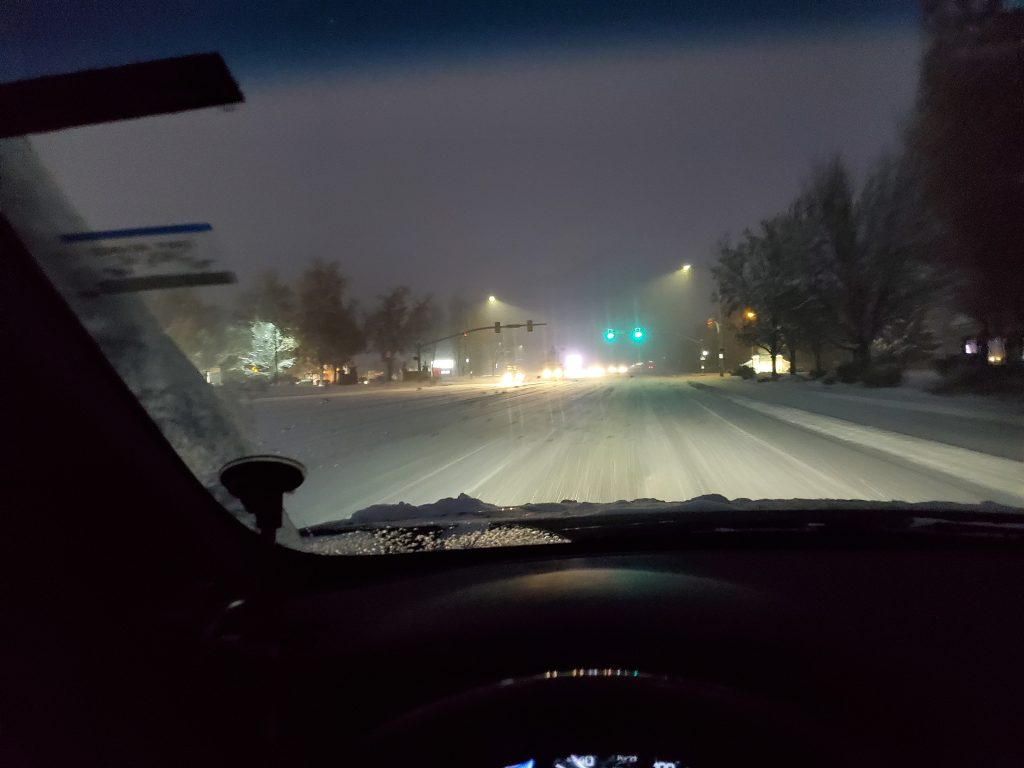Before a terrible injury occurs, the first step is getting the right type of car insurance, the right amount of insurance and a smart insurance agent. The rule is that you need enough liability insurance to cover your personal assets and to provide for the people you injured with compensation to make up for what happened.
LIABILITY COVERAGE (YOU HURT SOMEONE ELSE, YOU DAMAGE THEIR PROPERTY)
All Utah non-business policies of insurance must have (1) Bodily Injury Liability Coverage, and (2) Property Damage Liability Coverage.
As of this writing in 2016, the Utah statutory legal minimum amount of car insurance coverage is $25,000/$65,000/$15,000. In the event of a car wreck where you are at fault, the bodily injury limits for would be at minimum $25,000 per person injured by your negligent conduct, with a total maximum of $65,000 per incident. This same minimum property liability coverage will help pay up to $15,000 when you damage or completely destroy another person’s property. Whether that is their car, their mailbox, or a building that you ran into.
$25,000/$65,000 is extremely low coverage, even for the college student who has little, or for the newly married folks with a home. The level of bodily injury and property damage insurance should generally be set in relation to the person’s non-exempt assets. Non-exempt assets in Utah are largely governed by the Utah Exemptions Act, 78B-5-501. Basically, Utah law does not allow creditors to sell your house to satisfy a debt unless it has more than $60,000 in equity between two married people. Nor can a creditor generally touch your 401(K) contributions. Same thing for a one car per person at $3,500 equity. There are several other classes of exempt personal and real property set forth in the statute. The essence is setting your insurance liability coverage levels to make sure if an excess judgment does render against you, that none of your property can be taken by creditors and is exempt under Utah law. Further, a Chapter 7 Bankruptcy analysis is conducted when setting your insurance levels.


EXAMPLE 1.
Bob rear-ends Joe on State Street, Provo. Joe sustains muscle strains, but no bone fractures or head injuries. Joe is just banged up, but fully recovers from his injuries. Bob has the Utah minimum $25/$65 liability policy and $15,000 property damage coverage.
Joe may make a claim for his injuries, but with the injuries Joe sustained, Joe will not recover more than $25,000 in his insurance claim against Bob’s insurance policy. Thus, Bob’s insurance did its job. It covered Bob against claims and protected his assets, like his home, two cars, boat, motorcycle and his bank accounts.
EXAMPLE 2.
Bob rear-ends Joe on State Street, Provo. Joe is driving and breaks his arm and leg. Joe’s wife hits her head, causing a fracture. Joe’s brother is a passenger and is just banged up, but his injuries fully resolve. Joe’s infant son is also hurt. Bob has the Utah minimum $25/$65 liability policy and $15,000 property damage coverage.
Joe, his wife, infant son, and brother all make insurance claims against Bob’s minimum $25,000/$65,000 liability policy. Joe’s bone fractures are valued at $25,000. Wife’s traumatic head injury causes long and short term memory loss, with future medical care valued at $100,000. The infant son and brother each present claims for $7,000. Bob’s liability coverage is maxed out at $65,000. In fact, Bob’s insurance company tenders the maximum $65,000 to the injured parties and walks away. These injured parties may look to Bob’s personal assets to satisfy their injury claims. This could be a major problem for Bob if he has home equity substantially over $60,000, or his income is too high to file personal bankruptcy. Further, Bob’s bank accounts will be subject to a garnishment and his boat and motorcycle are not exempt.
Bob should have more insurance to cover his personal assets and provide for those who he hurts.


PERSONAL INJURY PROTECTION (PIP)
PIP reimburses a portion of wage loss, medical bills and essential home services incurred as a result of the car wreck. PIP covers passengers in your car, it covers pedestrians or motorcycles that are involved in a collision with your car.
PIP is required in all car insurance policies at a minimum $3,000 level. PIP benefits will pay out regardless of whether you are at fault, or the other person who hit you with their car is at fault. PIP benefits are what are called “No-Fault.”
PIP is required at $3,000, but can be higher, and it is a good idea to obtain higher PIP amounts because of the No-Fault characteristics. Meaning your insurance carrier pays out when needed, faster and covers mounting medical bills from a car collision, especially in today’s society where fewer and fewer people have private health care insurance.
See this deeper article on PIP.
EXAMPLE 1:
Bob rear-ends Joe on State Street, Provo. Joe sustains muscle strains, but no bone fractures or head injuries. Joe is just banged up, but fully recovers from his injuries. Bob has the Utah minimum $25/$65 liability policy and $15,000 property damage coverage with $3,000 PIP benefits. Joe has $3,000 PIP benefits.
Bob is also injured when he rear-ended Joe. Bob goes to ER room, then physical therapy, even though Bob is completely at fault for the collision. Bob’s PIP benefits under his own car insurance policy will pay the ER doctors and the physical therapist up to the PIP policy limits.
Joe did nothing wrong and he was hurt by Bob’s poor driving choices. Joe’s own car insurance policy will kick in and immediately start paying for Joe’s medical bills caused by the car collision. Luckily for Bob and Joe, their medical bills from the collision only rise to $4,500 and the first $3,000 were covered by their respective PIP benefits. Leaving the $1,500 balance to their private health care insurance, if any, to pay out; otherwise, Bob and Joe pay, or risk collections.
EXAMPLE 2:
Bob rear-ends Joe on State Street, Provo. Joe is driving, breaks his arm and leg. Joe’s wife hits her head, causing a fracture. Joe’s brother is a passenger and is just banged up, but his injuries fully resolve. Joe’s infant son is also hurt.
Bob has the Utah minimum $3,000 PIP and this roughly covers all of Bob’s medical bills from the collision, even though he caused the action. Joe on the other hand incurs $10,000 in ER bills for his bone fractures, but he had $10,000 in PIP medical benefits. Joe’s own PIP insurance benefits immediately pay out to Joe, Wife, Brother, and Infant Son, each to a maximum of $10,000.
Higher PIP benefits are worth the extra expense because when a car wreck occurs the PIP benefits start to flow immediately and without regard to who was at fault. When you are disabled from a car wreck, and can’t work, you want your medical bills paid, and some wage loss reimbursements.
UNDERINSURED INSURANCE (“UIM”)
Utah does not require underinsured insurance (“UIM”), but it should always be purchased, unless you are Bill Gates and have more money than you know what to do with.
UIM insurance is part of your own car insurance policy, just like PIP and bodily injury and property damage liability coverages spoken about earlier. If UIM is purchased, it must be purchased in an amount equal to your bodily injury liability coverages
UIM kicks in when the person who hurts you in the car wreck is at fault, but your injuries are not fully covered by his small bodily injury liability policy. In other words, you have a fractured hip bone with significant surgical hardware and his Utah minimum $25,000 policy does not even touch your $100,000 in ER bills and orthopedic surgeries. This is an example where you tap into your own UIM coverage to provide compensation for your injuries caused by the other person.
Here is a more in-depth article on UM.
EXAMPLE 1:
Bob rear-ends Joe on State Street, Provo. Joe sustains muscle strains, but no bone fractures or head injuries. Joe is just banged up, but fully recovers from his injuries. Bob has the Utah minimum $25/$65 liability policy and $15,000 property damage coverage with $3,000 PIP benefits. Joe has $3,000 in PIP benefits. Joe has $50,000 UIM coverage.
Joe makes a claim against Bob’s insurance policy and Bob’s insurance carrier pays Joe $15,000 for his injuries that Bob caused. In this situation, Bob’s liability policy was sufficient to cover Joe’s injuries because Joe’s injuries did not rise above Bob’s maximum $25,000 liability policy. Joe has no need, nor can he legally tap into his own UIM policy because Joe was already fully compensated by Bob’s liability policy.
EXAMPLE 2:
Bob rear-ends Joe on State Street, Provo. Joe is driving and breaks his arm and leg. Joe’s wife hits her head, causing a fracture. Joe’s brother is a passenger and is just banged up, but his injuries fully resolve. Joe’s infant son is also hurt. Bob has the Utah minimum $25/$65 liability policy and $15,000 property damage coverage.
Most likely Bob’s liability carrier will tender to Joe and his Wife their maximum $25,000 per person limits because of the seriousness of their injuries. Infant Son and Brother make claims under the $65,000 max cap, and they resolve their insurance claims against Bob’s liability carrier.
As to Joe and Wife, this is a situation where Joe will turn to his own car insurance policy and ask for compensation under his UIM policy because he was not fully compensated by Bob’s small, Utah law minimum $25,00 liability policy. Joe feels his injuries are valued at $40,000. After negotiations, Joe’s UIM policy pays Joe an extra $15,000 to make him whole from the car wreck.
As to his Wife, head injuries can have permanent life-long effects on a person, requiring medical care for the rest of her life at a significant cost. Bob’s liability carrier immediately tendered his Wife its $25,000 liability policy limits, but that is not even close to her anticipated future medical costs calculated at $150,000, not including pain and suffering or her impaired capacity to work. Wife now makes a claim against Joe’s UIM coverage, which is the same as Joe’s liability policy of $50,000. Immediately Joe’s UIM carrier pays Wife its UIM policy limits of $50,000 to Wife.
UNINSURED INSURANCE (“UM”)
Uninsured coverage operates when the at fault party who hurts you in a car wreck did not have car insurance, or fled the collision scene. UM insurance can be waived, just like UIM insurance, but that is a poor decision to make. And just like UIM insurance, when elected, it must be equal to the liability coverage. So if you select $25,000/$65,000 liability coverage, and you also elect for UM coverage, your UM will be at least equal to your liability coverage. So you will also have UM coverage at $25,000/$65,000.
See this article on Uninsured Motorist Coverage.
EXAMPLE 1:
Bob rear-ends Joe on State Street, Provo. Joe sustains muscle strains, but no bone fractures or head injuries. Joe is just banged up, but fully recovers from his injuries. Bob has the Utah minimum $25/$65 liability policy and $15,000 property damage coverage with $3,000 PIP benefits. Joe has $3,000 PIP benefits. Joe has $50,000 UIM coverage. Bob stays at the scene, fills out a police report and cooperates with his own insurance carrier to resolve the dispute.
Here Joe has no need to invoke his UM coverage because Bob stayed at the scene, was not a hit and run driver and Bob had liability car insurance, although a small amount.
EXAMPLE 2:
Bob rear-ends Joe on State Street, Provo. Joe sustains muscle strains, but no bone fractures or head injuries. Joe is just banged up, but fully recovers from his injuries. Bob has the Utah minimum $25/$65 liability policy and $15,000 property damage coverage with $3,000 PIP benefits. Joe has $3,000 PIP benefits. Joe has $50,000 UIM coverage. This time Bob is a terrible, unproductive, non-contributing citizen and drives away from the collision scene. Later, Bob is found, but he doesn’t have car insurance and was drunk.
Joe can’t collect from Bob because Bob probably has no assets to fund any court judgment that is obtained against Bob because Bob is a schmuck, drives drunk, has no money and didn’t have insurance. In this situation, Joe will look toward his own UM car insurance policy to pay for his injuries.


CONCLUSION:
Utah law requires at least $25,000/$65,000 of liability insurance and $15,000 of property damage insurance. But you should generally have more, but that is dependent on how many personal non-exempt assets you have and your willingness to file bankruptcy in the event of an excess judgment.
Further, Utah law requires a minimum of $3,000 in PIP benefits for car insurance policies, but having more is highly recommended because many people do not have private health care insurance which will pay mounting medical bills from a car wreck.
Uninsured and Underinsured policies of insurance may be waived, but for the cost of the insurance, it is well worth your money to obtain an underinsured/uninsured policy.
Lastly, having enough insurance to cover your injuries is important so that you can get the medical care you need to keep working, or at least get you by for a while until you heal. Further, having enough liability insurance to cover the injuries you cause other people is equally important. When you make bad decisions and hurt someone else, you should pay for the injuries and damages that you cause. Adequate insurance helps.
Attorney Jacob S. Gunter can help you navigate your way through the maze of the insurance world when a car accident happens and you are hurt, or a loved one is hurt. (801)-373-6345.
